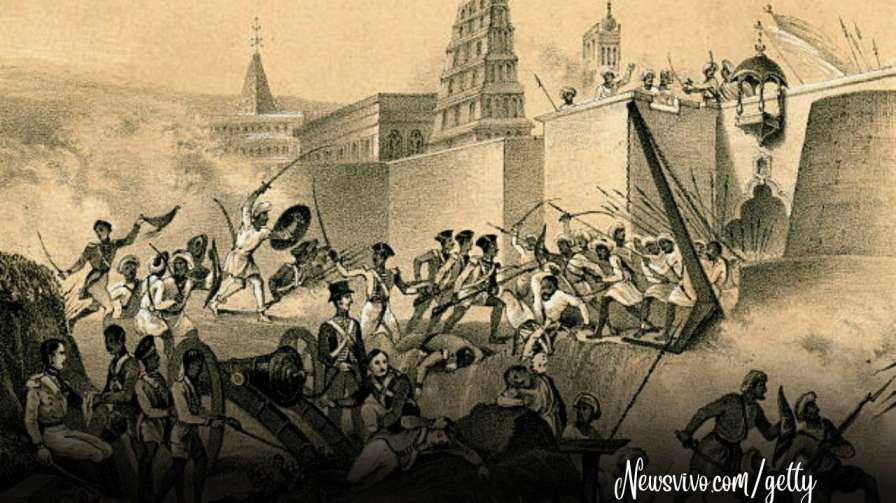Tipu Sultan_The Mysore king is seen to have been a pretty powerful last line of defence against British imperialism in India. Recent political campaigns in Karnataka have been spurred by the controversy over whether to view Tipu Sultan, the 18th-century king of Mysore, as a patriot or a ruler.

Tipu Sultan the Ruler
Ashwath Narayan, the minister of higher education for Karnataka, recently made a controversial allegation that Uri Gowda and Nanje Gowda, two Vokkaliga chieftans, murdered Tipu rather than the British, which drew criticism for being historically false. Yet the claim also fits with a carefully prepared story that the Brits have been developing over time. The Company’s colonial violence had achieved atonement by slaying “Tipu Sultan the Ruler.”
The siege of Seringapatam in 1799 must have been a watershed moment in British history. Why else would it be a favourite topic of British art and popular literature for decades? The incident was a watershed point for British imperial aspirations in South Asia, since it marked the fall of Tipu Sultan, probably the most renowned Indian, or rather ‘villain’ for the Empire.
The Mysore king is believed to have been the final and most strong barrier against British expansionism in India. Kate Brittlebank, the preeminent scholar on Tipu Sultan, wrote in her history of the king that for 30 years, first father Haider Ali and then Tipu Sultan himself were at the forefront of British popular consciousness. “Terrifying tales of attacks on British soldiers and threats to economic towns like Madras appeared in the day’s newspapers, heightened by distance as they were conveyed home by ship,” she added.
Exaggerated accounts of torture of British prisoners of war, as well as their coerced conversions, made their way into the British public discourse with terrible details throughout the four Anglo-Mysore wars. Tipu was seen as the prototypical ‘oriental dictator’ and was usually referred to as ‘Tipu Sultan the Ruler’.
Tipu Sultan was killed by the British on May 4, 1799, during the Fourth Anglo-Mysore War. The invasion had been methodically organised by a combined army of the British under General George Harris, the Marathas, and the Nizam of Hyderabad, who had signed a treaty of subsidiary alliance with the British only two years before. According to Brittlebank’s account.
Tipu sultan had left his palace to investigate a rumour that one of his generals had been slain. At this time, the enemy forces had gained access to the fort and were attacking Tipu. He collapsed on the ground, injured. As one of the British troops sought to take the Sultan’s jewelled belt, he protested with his sword. The soldier shot him right away.
The announcement of Tipu Sultan‘s passing sparked a surge of joy across Britain. Playwrights, novelists, and painters were inspired to create by moments from the battle and the last assault. The British leveraged the moral importance of Tipu’s murder to further their colonial goals in the area.The East India Company was able to allay British public concerns about the Empire and persuade them of the validity of its position within the British nation through the war on Tipu and his possessions, according to historian Michael Soracoe’s 2013 PhD dissertation.
A few years ago, because of their violence in India, governors-general Charles Cornwallis and Richard Wellesly were seen with dishonour in Britain. However, historians have suddenly cleared them of any responsibility. They believed that maintaining peace and security in the area required their policies and military actions.In Britain’s mainstream media, Tipu Sultan was portrayed as Mysore’s resident oppressor. It gave rise to the assertion that “the Company’s invasion of the region were performed as acts of liberation, aimed to safeguard the local populace from the depredations of a mad dictator in true paternalistic fashion,” as Soracoe noted.
The Kodava community, an ethno-linguistic group located in the Kodagu area of Karnataka and widely renowned for their martial rituals, finest exemplifies the influence this tale had on the memories and historical awareness of the native people of Southern India. Tipu Sultan is remembered by Kodavas as a religious fanatic who slaughtered numerous members of their community and carried hundreds as prisoners of war to his fort in Seringapatam, where they were forcibly converted. Although historians contest this allegation, the community has stayed steadfast in its support for Tipu Sultan.
The Kodavas’ sensitivity to the Tiger of Mysore was seen in the large demonstrations held in the area following the announcement of the Tipu Sultan Jayanti festivities by the Siddaramaiah-led Congress administration in 2015.

While popular history has its importance in the construction of a community’s identity, the villanisation of Tipu among the Kodavas must be considered in the context of the community’s unique patron-client relationship with the British during the nineteenth century. From 1834 until 1947, Kodagu was directly administered by the British.
One might hypothesise on how the British portrayal of Tipu Sultan influenced the historical awareness of a local people they dominated and who had fought alongside the British Army in great numbers throughout the two World Wars.Tipu Sultan’s image was revived and reinvented as a figure of resistance to the British only much later, particularly during India’s Independence struggle.